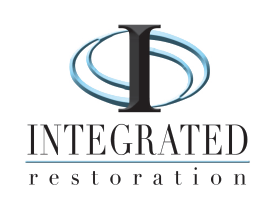How to Prevent Mold After Water Damage – Steps to Take Immediately
Water damage isn’t just an inconvenience—it creates the perfect breeding ground for mold. In as little as 24-48 hours, mold can begin forming, leading to structural damage, health risks, and expensive repairs. Whether from a burst pipe, flooding, or a roof leak, taking immediate action is crucial to prevent mold growth.
Why Does Mold Grow After Water Damage?
Mold thrives in environments where there’s moisture, organic material (like wood or drywall), and poor airflow. After water damage, excess moisture seeps into floors, walls, and furniture, creating hidden pockets of dampness where mold spores settle and multiply.
Common factors that accelerate mold growth include:
High humidity (above 60%) – Moist air fuels rapid mold development.
Poor ventilation – Stagnant air traps moisture, allowing mold spores to flourish.
Absorbent surfaces – Materials like carpet, drywall, and wood hold onto water, making complete drying difficult.
By understanding these conditions, you can take targeted actions to dry out affected areas and stop mold before it starts.
Step 1: Remove Standing Water Immediately
The longer water sits, the greater the risk of mold growth.
Use pumps, wet/dry vacuums, or towels to remove standing water.
Open doors and windows to increase airflow if weather permits.
If flooding is severe, call a professional water damage restoration service.
Need immediate water removal? Learn more about our water damage restoration services.
Step 2: Dry Out the Affected Area
Moisture trapped in walls, floors, and furniture creates the perfect breeding ground for mold.
Use high-powered fans and dehumidifiers to speed up drying.
Remove and discard soaked carpets, insulation, and drywall if they cannot be dried completely.
Place absorbent materials like towels or baking soda in damp spaces.
Tip: Maintain indoor humidity levels below 50% using a dehumidifier to prevent mold growth.
Step 3: Surface-Specific Prevention Strategies
Different surfaces require different mold prevention techniques:
Drywall
Mold spreads quickly through drywall since it absorbs water like a sponge.
If drywall is saturated, cut and replace it—surface drying isn’t enough.
For minor dampness, use a dehumidifier and anti-microbial spray to prevent mold spores from taking hold.
Carpet & Upholstery
Carpets soak up water fast and are difficult to dry completely.
If a carpet has been wet for over 24 hours, mold likely already exists. Consider replacing it.
For minimal exposure, steam clean and disinfect carpets to eliminate spores.
Wood & Furniture
Wood swells when exposed to moisture, allowing mold to penetrate deep into the fibers.
Wipe wooden surfaces with mild detergent and allow full air circulation to dry.
For severe water damage, sanding and refinishing may be necessary.
Already dealing with mold? Our team can help with expert mold remediation. Learn more.
Step 4: Check for Hidden Moisture
Even if an area looks dry, hidden moisture may linger behind walls and under flooring.
Use a moisture meter to check for damp spots.
Inspect crawl spaces, behind cabinets, and under flooring.
If you suspect unseen moisture, contact a mold remediation specialist.
Step 5: Disinfect and Sanitize the Area
Mold spores thrive in damp, unclean spaces. After drying, thoroughly sanitize surfaces:
Use a mixture of water and vinegar or a mold-specific cleaner.
Scrub walls, floors, and furniture to remove potential spores.
Dispose of contaminated materials properly to prevent reinfestation.
Step 6: Improve Ventilation and Airflow
Proper airflow prevents moisture buildup and mold formation.
Open windows and doors to encourage circulation (weather permitting).
Use dehumidifiers to maintain indoor humidity below 50%.
Run exhaust fans in bathrooms, kitchens, and basements.
Tip: If your HVAC system was exposed to water damage, have it professionally cleaned to prevent mold from spreading through your ventilation system.
Step 7: Monitor for Mold Growth
Even after thorough drying, stay vigilant for early mold warning signs:
Musty odors in affected areas
Discoloration on walls, ceilings, or furniture
Allergy-like symptoms (sneezing, coughing, irritated eyes)
If you suspect mold, schedule a mold inspection immediately.
Learn more about our professional mold remediation services.
When to Call a Professional
If water damage is widespread or mold has already begun to form, don’t wait. Mold can spread quickly, leading to:
Structural deterioration of walls, floors, and ceilings.
Respiratory issues from airborne mold spores.
Expensive repairs if mold growth is ignored.
Integrated Restoration specializes in fast-response mold remediation and water damage restoration. Contact us today to schedule an assessment and protect your property.

